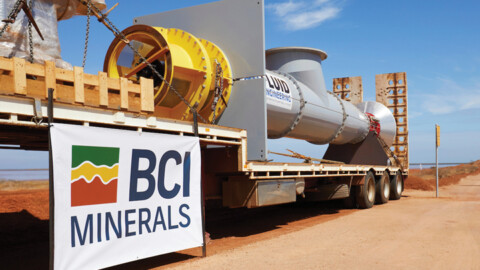Over the past decade, microbreweries have become an increasingly expanding section of the Australian beer market, with over 500 brands worth more than $807 million a year in 2020 – a value that is estimated to be rising by five to ten per cent each year. IBIS World forecasts that rising consumer demand for innovative new beer varieties and flavours, and low barriers to entry will see enterprise numbers increase as new entrants try to capitalise on strong consumer demand. The growing appetite for craft beers also represents an opportunity for pump equipment suppliers and manufacturers, as pumps, valves and pipes play an important role in the brewing process. Here, we look at the brewing process and the equipment that is used throughout the process.
The beer brewing process
1. Malting
Malting is the first step in the beer production process. The fresh barley is soaked in water and germinated in germinating boxes. In this phase, the enzymes (amylase), which are needed for starch separation, are formed. The germinating process is then interrupted at the optimal stage by the drying (kilning) and the green malt is dried at 80°C. The malt sugar will later serve to feed the yeast cultures that form the alcohol.
2. Milling
The second step is milling. The finished malt is milled so that it dissolves better in water. Malt mills produce various grades of crushed malt: husks, groats, meal, semolina and powder (from coarsest to finest).
3. Mashing
The milled malt is then mixed with water in the mash tun where the starch in the grist dissolves and sugar, protein and tannin are released. This mashing process produces the malt extract.
4. Lautering
The mash is filtered in the lauter tun. In this step, the husks sink and the wort is separated from the solid substances (spent grains). While the wort is further used in the brewing process, the spent grains are usually used as cattle fodder.
5. Wort boiling
The wort is transferred to a brewing pan or wort kettle and brought to the boil to ensure sterility. Hops are added at various times during the boiling process to impart hop bitterness, flavour and aroma – these are determined by the type and amount of hops used with more hops creating a more bitter tasting beer. As the water evaporates, the wort becomes concentrated to the original wort, the malt enzymes are deactivated, and tannin and protein elements are separated out to form the trub.
6. Wort clarification
The wort is then sent to the whirlpool to be clarified or drawn off. The whirlpool rotates, forcing the hop particles that have not dissolved and protein – the trub – to form a cone in the middle of the container, with the clear wort tapped off at the side. The clear wort is cooled to a temperature of between 10-20°C in the wort cooler.
7. Fermentation
The cooled wort is pumped into a fermentation tank where special brewing yeast is added. The yeast converts the malt sugar into alcohol and carbon dioxide. Once the malt sugar has fermented, the yeast sinks and is collected. Depending on the type of yeast and the wort preparation used, a top- or bottom-fermented beer is produced.
8. Storage
The young beer is then transferred to maturation tanks where it is stored at 1-2°C from anywhere between three weeks to three months.
When the sugars have almost completely dissolved, a secondary fermentation takes place where the remaining yeast particles and proteintannin sink to the bottom. The beer becomes clear and acquires its characteristic colour.
9. Filtration
During the filtration stage, any substances still remaining after fermentation and secondary fermentation, such as yeast particles, hop resin and protein are removed and the beer gets its final clear colour.
10. Filling
The last stage in the brewing process is the filling. The beer is put into bottles or cans, or into kegs for distribution.
Pumps in the beer brewing process
From large breweries to microbreweries and home brewers, various pumps are used at multiple steps throughout the brewing process.
Due to the important role pumps play in the brewing process, pump selection needs careful attention and the equipment needs to be well-maintained to sustain performance and operation.
The production process can be roughly divided into hot and cold applications, with each of these having different requirements. Hot applications include filtering, cooking and cooling work, and cleaning in place.
Cold applications include fermentation/propagation, cooling down and bearing, filtering, filling, and bottle fermentation. It is crucial that the pumps are able to handle difficult fluids such as yeast, mash and wort which are abrasive and viscous in nature.
These need gentle handling and require a pump that provides moderate pumping action. Furthermore, pumps that are moving the product need to be made from hygienic materials to comply with food regulations.
There are three main types of pumps recommended for brewing applications – centrifugal, peristaltic and diaphragm – depending on what it will be used for.
Typical applications for a centrifugal pump are:
• Hot liquor transfer
• Hot wort transfer
• CUP pumping and scavenging
• Tank to tank transfer
• Tank cleaning
Typical applications for a peristaltic or diaphragm pump are:
• Mash recirculation
• Liquid sugar transfer
• Mash-in-wort
• Yeast slurry transfer
• Bottling, casking and canning
• Syrup transfer

Centrifugal pumps
Centrifugal pumps are the most commonly used pump in the beer brewing process as they are able to handle high enough temperatures to be able to transfer hot wort or recirculate the mash. They are also ideal for transfer and filling applications in bottling, casking and canning.
Hygienic, food grade versions of this type of pump should be selected to ensure it remains sanitary and the product moving through it is able to be consumed by people. The main benefits of using a centrifugal pump is that there is minimal upkeep and therefore a lower maintenance cost; they can be fitted with a heat jacket; and they are compact with a simple design and few parts.
However, these pumps must be kept below the liquid level being pumped and if a self-priming version is not selected, they need to be primed before starting as the motor can be burned out if run dry.
Peristaltic pumps
Peristaltic pumps have a simple but effective design where the liquid passes through a flexible tube or hose which is compressed to move the liquid. The advantage of this is that the tube or hose is the only part of the pump that comes in contact with the wort, which reduces the risk of contamination and makes cleaning easier. They are also typically self-priming so dry running is not generally a problem.
The main benefits of peristaltic pump include:
• Available in different sizes with a range of flow rates
• Can handle fragile fluids with little wear
• The tube or hose can be easily replaced
• Able to pass solids in the material being pumped
• Seal-less design eliminates leaks, contamination and wear problems
• Reversible operation allows pumping in both directions
• Low maintenance requirements
However, these pumps tend to be more expensive than centrifugal or diaphragm pumps.
Diaphragm pumps
Diaphragm pumps are designed to allow the liquid to move in and out of a diaphragm by alternatively increasing and reducing pressure in the pump housing. These pumps are great for transferring lower temperature liquids, such as moving cooled wort into the fermenters or for pumping beer between fermenters or into kegs for carbonation. For higher temperature applications such as recirculating wort or transferring hot wort through a chiller, specially-designed high temperature models will need to be purchased.
Selecting a sanitary model is also important as standard diaphragm pumps can be difficult to clean. They often come with features such as lubricant-free air distribution system, maintenance-free ball check valve system, easy and complete visual inspection of wetted pumps, and support cleaning and sterilization in place (CIP or SIP), making them ideal for food and beverage applications.
Piping and valves
Breweries also have a vast system of pipes, and various valves required to regulate the flow of fluid through the system. Pipes are an integral part of a brewery as it supports all the steps in the brewing processes, transporting not only the ingredients and fluid at every stage but also gases and liquids for cleaning, sanitation, wort cooling, etc..
Different sized pipes are needed to handle the range of volume being moved, and knowing piping size and capacity is crucial, as well as a knowledge of fluid dynamics. Each pipe size requires a certain amount of length to contain the fluid, for example a half inch pipe requires just over 459m of pipe to contain one barrel of fluid while a 12 inch pipe requires only 1.5m of pipe to contain the same amount of liquid.
This knowledge is important considering all the different uses for pipes in this application and the amount of space needed to accommodate each stage of the process. Fluid dynamics on the other hand, determines what happens to the liquid or gas and its molecules when travelling through the pipes at different velocities. There are two types of flow that need to be considered:
• Laminar flow – where the fluid moves through the pipe at a velocity that leaves the molecules’ travel undisturbed in the direction of the flow. This flow type ensures fluid travels smoothly and molecules move in a parallel direction. When velocity increases, a change occurs, resulting in varying direction of the molecule flow
• Turbulent flow – when molecules become scattered and flow chaotically
Both flow types can be used in the brewing process, with different steps requiring different flow types. Pipe diameter also has a role to play in determining the flow type. There are a number of valves types that can found throughout the piping system in a brewery, including:
• Cock valve – this valve is a plug with a hole that can be turned to restrict or stop flow. Some come with a handle that can be turned 90 degrees, from fully open to fully closed
• Diaphragm valve – this valve has a soft diaphragm that pushes against a bell-shaped feature by a mechanical screw, allowing the gas or liquid flow to be controlled within its total variability. Flow pressure tolerance is fairly tight
• Butterfly valve – most commonly used in breweries due to its compact design, and wide pressure and flow tolerances. This valve has a metal disc that rotates within the valve body and closes against a rubber seal. It’s easy to clean due to its flow-through design
• Manifold valve – common in large breweries where systems are hard piped, and in release matrixes. It is a more complex valve that can be installed vertically or crossed with horizontal piping. This type of valve tends to be more costly than other options





















